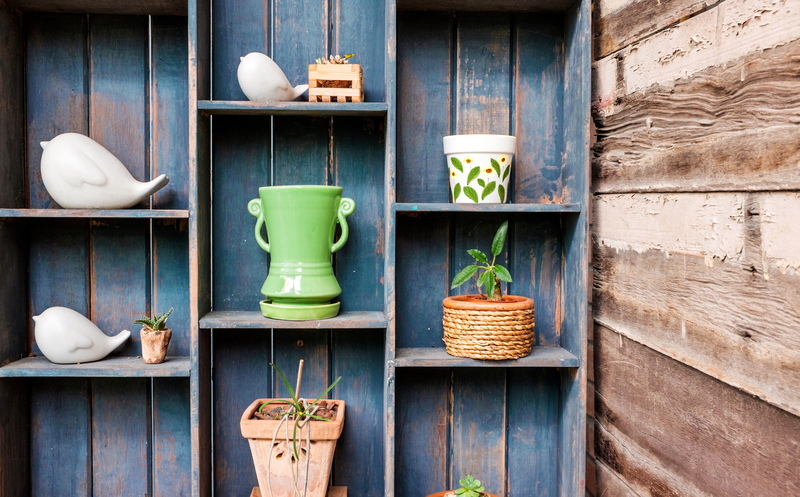Elevate Your Home into an Eco-Friendly Living Space
As the global community becomes increasingly concerned about the impact of environmental degradation, more homeowners are looking for ways to create an eco-friendly living space. Transforming your home into a green haven doesn't just benefit Mother Earth, but can also reduce your energy bills and enhance your well-being. Here's an all-inclusive guide to elevating your home into a sustainable abode.
Why Opt for an Eco-Friendly Home?
The move towards an eco-friendly home is more than just a trend; it's a necessity. Climate change is a pressing issue, and reducing your carbon footprint can play a significant role in its mitigation. Moreover, an eco-conscious home can improve the indoor air quality, leading to a healthier lifestyle. Adapting to green living fosters a sense of responsibility and empowerment, knowing you're contributing to a sustainable future.

Steps to Transform Your Living Space
1. Energy Efficiency Begins with Smart Usage
- Upgrade to LED Lighting: LEDs are 80% more efficient than conventional light bulbs.
- Install Smart Thermostats: These devices learn your schedule and temperature preferences, reducing energy waste.
- Use Energy-Efficient Appliances: Look for the Energy Star label, which signifies superior energy performance.
By optimizing energy consumption, not only will you cut costs, but you'll also aid in lessening the environmental strain.
2. Water Conservation Techniques
Water is a precious resource, and conserving it should be a priority. Here's how you can reduce water consumption:
- Install Low-Flow Fixtures: Faucets and showerheads that limit water usage can drastically cut down water consumption.
- Harvest Rainwater: Use rain barrels to collect rainwater for irrigation purposes.
- Fix Leaky Pipes Immediately: Even a small leak can waste gallons of water over time.
Implementing these changes collectively can promote a more sustainable water usage.
3. Sustainable Materials for Green Living Spaces
- Bamboo Flooring: A fast-growing plant that makes a durable and eco-friendly flooring option.
- Reclaimed Wood: Incorporate history into your design by using wood from old barns or warehouses.
- Natural Insulation: Utilize sheep's wool or cellulose for insulating against cold and heat.
Opt for materials that have minimal environmental impact, ensuring your home is stylish yet earth-friendly.
4. Embrace Renewable Energy
Renewable energy sources are a major cornerstone for creating an eco-friendly home. Consider these options:
- Solar Panels: Harness the power of the sun to meet your energy demands, significantly slashing your electricity bills.
- Wind Turbines: Suitable for homes with sufficient wind speeds, they can complement your green energy initiatives.
- Geothermal Heat Pumps: Use the earth's stable temperature to heat and cool your home efficiently.
Transitioning to renewable energy decreases reliance on fossil fuels, fostering a greener planet.
Eco-Friendly D?cor and Furnishings
Your home's interior design can also reflect your eco-conscious values. Here's how:
- Second-Hand Furniture: Give pre-loved items a new home and reduce landfill waste.
- Natural Fabrics: Choose organic cotton, linen, or wool for upholstery and curtains.
- Non-Toxic Paints: Select options free from volatile organic compounds (VOCs) to maintain clean indoor air.
Combining aesthetics with sustainability creates an environment that is both appealing and responsible.
The Role of Indoor Plants in Creating a Sustainable Home
Indoor plants not only beautify homes but also purify the air. Here are a few options to consider:
- Spider Plant: Renowned for removing toxins and being easy to care for.
- Peace Lily: Breaks down and neutralizes harmful gasses like carbon dioxide.
- Snake Plant: Known for its ability to convert CO2 into oxygen at night.
Utilizing plants improves indoor air quality while enhancing your home's decor.

Challenges and Considerations
Transitioning to an eco-friendly home isn't without its challenges. Initial costs can be high, especially for renewable energy systems or major retrofitting. However, consider these as investments that offer long-term savings and environmental benefits. Thoroughly research grants or tax incentives that may be available in your area to ease financial burdens.
Conclusion: A Collective Effort for a Sustainable Future
Creating an eco-friendly home is not just a personal achievement but a step towards a larger global goal of sustainability. Every small change contributes to a more profound impact on the environment. Encourage family and friends to adopt green practices, fostering community awareness. Together, we can elevate our homes and our planet into healthier, more sustainable spaces for future generations to enjoy.
By following these guidelines and thoughtfully selecting renewable resources, you will be well on the way to transforming your living space into a truly eco-friendly home.